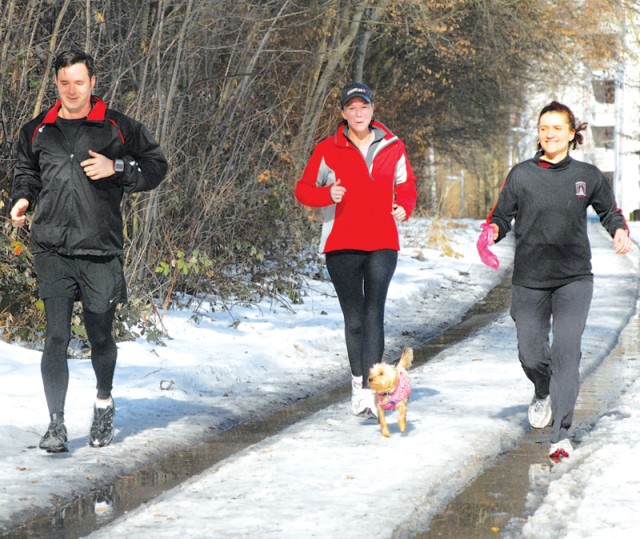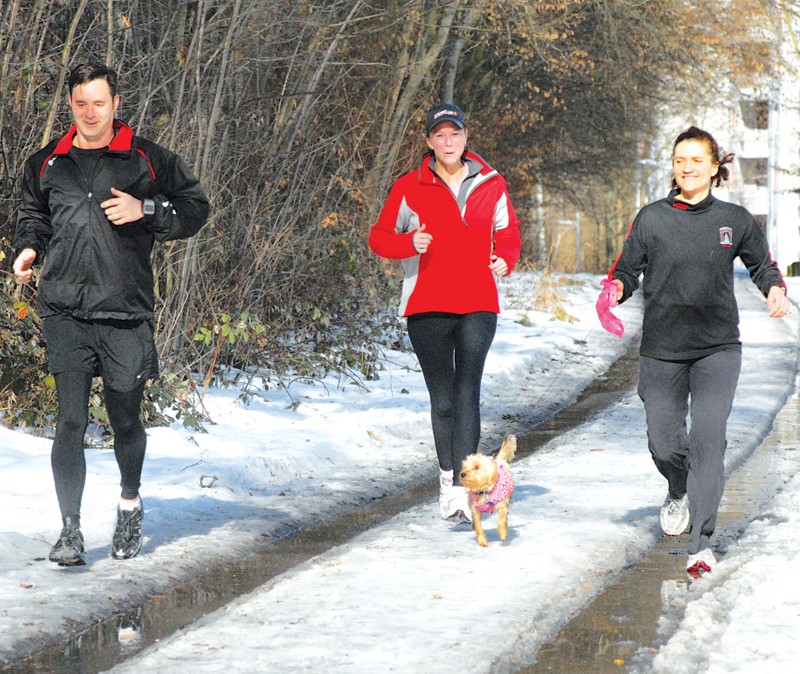STUTTGART, Germany -- Lynn Knapp had the first-day-of-school jitters.
She is not in the classroom to study biology, economics or German.
Knapp, a student in Patch Fitness Center's School of Marathon, wants to learn how to run.
"If you learn how to run, it's something you can do forever. You don't need a gym or special equipment," said the mother of four.
Knapp, who until recently home-schooled her children, signed up for the program to get physically fit.
"I don't have lofty goals. I just want to get in shape, improve my health and fitness level. If I get a 5K or 10K race out of it, it's a happy side effect," she said.
The School of Marathon, sponsored by U.S. Army Garrison Stuttgart Family and Morale, Welfare and Recreation, will give her the accountability and motivation she needs, Knapp said. "It's the right time."
For this Army spouse, it's the right time for a couple of reasons. "I've wanted to do something for myself for a long time," she said.
Plus, her husband deployed in December, and she wants to surprise him when he returns. "I want him to come back and say, 'Who are you, and what did you do to my wife','" she said.
Running, as defined by Merriam-Webster, is "to go steadily by springing steps so that both feet leave the ground for an instant in each step."
It sounds simple enough. So why does a person need to go to school'
"To run efficiently, with less strain," said Angi Buckley, an endurance athlete and the School of Marathon's coach.
While some people are naturally gifted runners, "most of us need to be taught, or if not taught, tweaked," said Buckley, a certified personal trainer with a running resume that includes more than 20 marathons and 11 ultra-marathons of distances up to 100 miles.
Improper technique, such as striking the ground with the heel of the foot, can cause pain and injuries, according to Buckley. "Injury prevention is my number one goal."
But the three-month program is more than learning how to correctly put one foot in front of the other.
Buckley said she incorporates many of the current principles taught by leading exercise physiologists. Her students will learn about proper nutrition, race psychology, warm-up techniques and core muscle training.
They also get an hour with Buckley as personal trainer and can participate in weekly group runs.
More than that, Buckley will provide each student with a detailed training plan to meet their goals, whether it is a run/walk program for a beginner or a training plan for a specific race.
Robin Brion has her eye on the Prague Marathon in May.
With two marathons and "many, many half marathons" under her belt, Brion has also enrolled in the program.
A self-professed "casual runner" Brion wants to improve her speed and form, while staying injury free.
She also wants to be able to complete any marathon she enters.
Many marathons, pressured to re-open their courses to traffic, have imposed time limits, said Brion.
"I ran the Big Sur International Marathon. If you are not at Mile 22 in five hours, they will take you off the course. I reached [it] in four hours, so I was fine, but the anxiety of not reaching the time allotment adds to my stress."
And while her primary goal is to finish what she starts, "I think I can trim 15 minutes off my time with Angi's support," she added.


Social Sharing